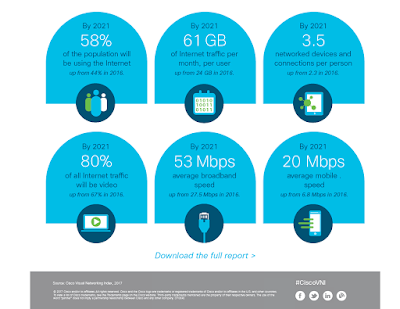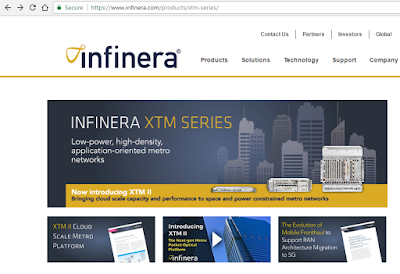Wrapping up the coverage of last week's Dell EMC World, a key point to consider is how the many component companies now assembled will fit together and what strategic advantage this provides over the likely competition.
At the low end, Dell Technologies will face challenges from the 'white' competitors - vendors can supply generic PCs, servers, switches, etc. on thin margins. even single digit margins. Especially as the industry turns to open networking software and Open Compute Platform (OCP) hardware designs, Dell EMC could find itself in the same race to the bottom in margins. This is the race that drove IBM to sell off its PC and server business to Lenovo.
Looking around the exhibits and customer case studies at last week's event, it looks like there is a solid case that Fortune 500 enterprises are sticking with Dell. They simply have too much at stake to risk being out of date with their technology or going with a dodgy vendor. Just looking at the many victims for the WannaCry ransomware attacks, once again we can hear the experts reminding everyone to keep their systems up-to-date. Businesses must realise that running Windows XP on PCs that are six years old can put the whole enterprise at risk. As a top brand, Dell should have a convincing case that it is the right partner for this.
Enterprise IT shops are also looking to public clouds for a bargain. For rolling out a new enterprise application, cloud vendors such as AWS, Google or Azure, certainly seem like a bargain. No upfront costs to buy server or storage. No wasted time in ordering, testing and provisioning equipment. No complications in planning how to back-up the application or how to scale it if grows quickly. No risk of buying too much and having unused compute and storage resources. And if the new application were to fail or found to be unneeded or redundant, there is no wasted capital for servers and storage that now must be disposed.

As discussed in previous parts, Michael Dell cited a key figure in his keynote, saying he believes public cloud services are 2.5 times more expensive than on premise solutions when considering long term costs, which one would expect means applications with heavy compute, networking and storage characteristics. Over a 3-year period, it is easy to see how public cloud expenses would exceed the cost of buying a server and operating it locally.
However, making a business case centred on long term cost is not the only way that Dell Technologies is tackling the challenge of public cloud migration. One way of fighting the attrition of enterprise customers to the public cloud, is to bring the public cloud on premise. Newly released is the Dell EMC Cloud for Microsoft Azure Stack, an on-premises hybrid cloud platform for delivering infrastructure and platform-as-a-service with a consistent Azure experience on-premises or in the public cloud. Everything you need to run Azure Stack is pre-configured on Dell hardware that resides in your own data centre. The Azure Stack APIs, tools, apps and services remain behind the enterprise firewall, and yet remain consistent with the customer's Azure public cloud experience. For Dell EMC, this is an opportunity to sell more PowerEdge R730XD and S-Series switches. For Microsoft, it is an opportunity to keep the customer running Microsoft server software while perhaps luring some, but not all, of the workloads into the Microsoft data centres.
Moving IT spending to a consumption model
One of Dell Technologies' big announcements is that it will now offer a consumption based model for its IT infrastructure products. This is its answer to the no-upfront cost lure of public cloud services. In a sense, the public cloud companies are paying to pre-deploy compute/storage/networking equipment in their data centres. They earn this money back as they fill it up with customers. At some point, the money collected exceeds the cost of purchase and from then forward until the day it is obsolete the equipment is delivering profit. With interest rates continuing to remain low, Dell can play this same game, and maybe they do not even need to borrow money and can self-finance the operation. For customers who choose the consumption model, Dell will provide the equipment, as the workloads increase and storage drives get filled, the bill increases. Customers pay only for the storage capacity needed. Importantly, the service promises instant access to additional buffer capacity during spikes driven by the business, with payments adjusting to match usage. If not needed any more, Dell can take back the equipment. Of course, the leasing contract will likely have many conditions and clauses, but certainly this model provides a direct answer for project managers comparing this quarter’s heavy capex spending for a new project with a much leaner opex alternative from Amazon Web Services. The flex pricing is initially available for all Dell EMC storage solutions, but company executives suggested that it could be expended across the IT portfolio.
This consumption model is already being used by other tech companies. There are processor cores that are activated and paid-for on-demand; similarly, Infinera offers a Bandwidth On-demand licensing model where network capacity can be activated in 100 Gbit/s chunks when demand justifies it.
Looking for start-up opportunities
Meanwhile, the new Dell Technologies Capital has just been introduced to manage the company's investment strategy. Specifically, Dell Technologies Capital will invest in start-up companies globally on behalf of all the business units, including Dell, Dell EMC, Pivotal, RSA, SecureWorks, Virtustream and VMware.
Dell Technologies figures that it has more than just capital to invest. Targeted start-up will also benefit from Dell's full resources, OEM and go-to-market relationships and global distribution challenge. While this new investment arm has just been unveiled, it has been running for several years and has already staked out equity positions in more than 70 early-stage start-ups. Targeted areas include storage, software-defined networking, management and orchestration, security, machine learning/artificial intelligence, big data/analytics, cloud, Internet of Things (IoT) and DevOps. Two Dell Technologies Capital portfolio companies were highlighted at Dell EMC World this year:
• Edico Genome, which created the first bio-IT processor and an end-to-end platform designed to analyse the massive workloads associated with DNA sequencing. The company is delivering a pre-configured, out-of-the- box solution with Dell Technologies that enables the analysis of an entire genome in 22 minutes compared to more than 24 hours using standard software.
• Graphcore, which developed new technology to deliver massive acceleration for Machine Learning (ML) and Artificial Intelligence (AI) applications. The company's Intelligence Processing Unit (IPU) is the first to be designed specifically for machine intelligence workloads.
All start-ups tend to look for an exit for their early investors, usually in the form of acquisition or an IPO. With Dell Technologies now having many companies under its umbrella, one can expect some of the portfolio investments to become acquisition targets. This is the well-known model of Silicon Valley, with some R&D essentially outsourced and the risk/reward is shared.






























